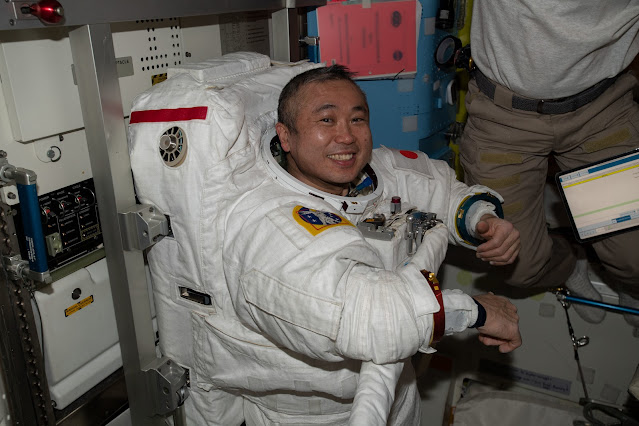Expedition 68: NASA’s SpaceX Crew-6 | International Space Station
The four SpaceX Crew-6 members pose for a portrait underneath a Falcon 9 rocket booster at SpaceX's headquarters in Hawthorne, California. From left, are Mission Specialist Andrey Fedyaev of Roscosmos; Commander Stephen Bowen and Pilot Warren "Woody" Hoburg, both from NASA; and Mission Specialist Sultan Alneyadi from the Mohammed bin Rashid Space Centre of the United Arab Emirates (UAE)
SpaceX Crew-6 crew members inside SpaceX Hangar X at the Kennedy Space Center in Florida
SpaceX Crew-6 crew members pose for a photo on the SpaceX helipad at the Kennedy Space Center in Florida
SpaceX Crew-6 crew members pose for a photo during a training session at the Kennedy Space Center's Launch Pad 39A in Florida
The four crew members of NASA's SpaceX Crew-6 mission to the International Space Station are Mission Specialist Sultan Al Nedayi of the United Arab Emirates (UAE), Mission Specialist Andrey Fedyaev of Roscosmos (Russia), Pilot William Hoburg (NASA), and Commander Stephen Bowen (NASA). Launch is scheduled for no earlier than Sunday, Feb. 26, 2023.
Astronaut Sultan AlNeyadi from the Mohammed bin Rashid Space Center (United Arab Emirates) will make history by being the first astronaut from the Arab world to spend six months on the International Space Station (ISS). AlNeyadi has undergone a 20-month long rigorous training for the Crew-6 mission. AlNeyadi began his training in September 2018, at the Yuri Gagarin Cosmonaut Training Center at Star City in Moscow, Russia.
Cosmonaut Andrey Fedyaev (Russia)
Andrey Valerievich Fediaev (Russian Cyrillic: Андрей Валерьевич Федяев; born February 26, 1981) is a Russian cosmonaut. Fediaev received his an engineering degree in air transport and Air Traffic Control from the Balashov Military Aviation School in 2004. Following graduation, Fediaev joined the Russian Air Force in the 317th mixed aviation segment. He obtained the rank of major before his retirement in 2013. He logged over 500 hours in Russian aircraft.
Fediaev was selected as a cosmonaut in 2012. He reported to the Gagarin Cosmonaut Training Center in 2012 and was named a test cosmonaut on June 16, 2014.
On July 15, 2022, he was assigned to the SpaceX Crew-6 mission after a recent crew swap agreement between NASA and Roscosmos.
NASA Astronaut William Hoburg's Official Biography:
https://www.nasa.gov/astronauts/biographies/warren-hoburg
https://www.nasa.gov/content/warren-hoburg-phd-nasa-astronaut
NASA Astronaut Stephen Bowen's Official Biography:
https://www.nasa.gov/astronauts/biographies/stephen-g-bowen
NASA’s Commercial Crew Program (CCP) works with the American aerospace industry to provide safe, reliable, and cost-effective transportation to and from the International Space Station on American-made rockets and spacecraft launching from American soil.
An international partnership of space agencies provides and operates the elements of the International Space Station (ISS). The principals are the space agencies of the United States, Russia, Europe, Japan, and Canada. The ISS has been the most politically complex space exploration program ever undertaken.
Credit: Space Exploration Technologies Corp. (SpaceX)
Image Dates: Aug. 8, 2022 - Jan. 13, 2023
#NASA #ESA #Space #Earth #Science #ISS #SpaceX #CrewDragon #Spacecraft #SpaceXCrew6 #Astronauts #SultanAlNedayi #MBRSC #UAE #Cosmonaut #AndreyFedyaev #Russia #Россия #Роскосмос #WilliamHoburg #MIT #StephenBowen #USNavy #CCP #HumanSpaceflight #UnitedStates #STEM #Education





















.jpg)






